Is Access and Benefit Sharing a Sustainable Cure to Biodiversity Loss?
March 10, 2023
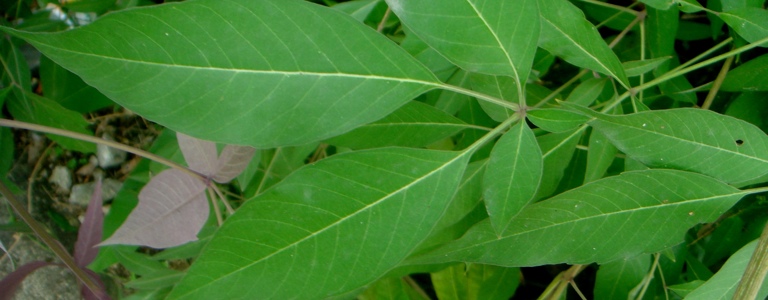
Lagundi (Vitex negundo) is the first commercially successful herbal medicine that arose from focused research.
For thousands of years, humans have been taking advantage of what nature has to offer. Other than food and shelter, we rely heavily on natural resources for medications, cosmetics, and cleaning products.
When companies and institutions look for new natural substances to utilize in their products, they undergo a process called bioprospecting. As defined by the United Nations, bioprospecting is the “exploration of plant and animal species for the utilization of their genetic resources." While not inherently harmful, it becomes worrying when the traditional knowledge of communities is involved and proper attribution, including fair benefit sharing, is not provided.
Bioprospecting usually leads to misappropriation when genetic resources, such as plant extracts and indigenous knowledge, are used without the permission of indigenous peoples. In some instances, the local communities concerned are used and commercialized for financial gain without benefits returning to these communities. Patents are used by companies to protect breakthroughs without paying the communities that provided the genetic material and knowledge a fair price.
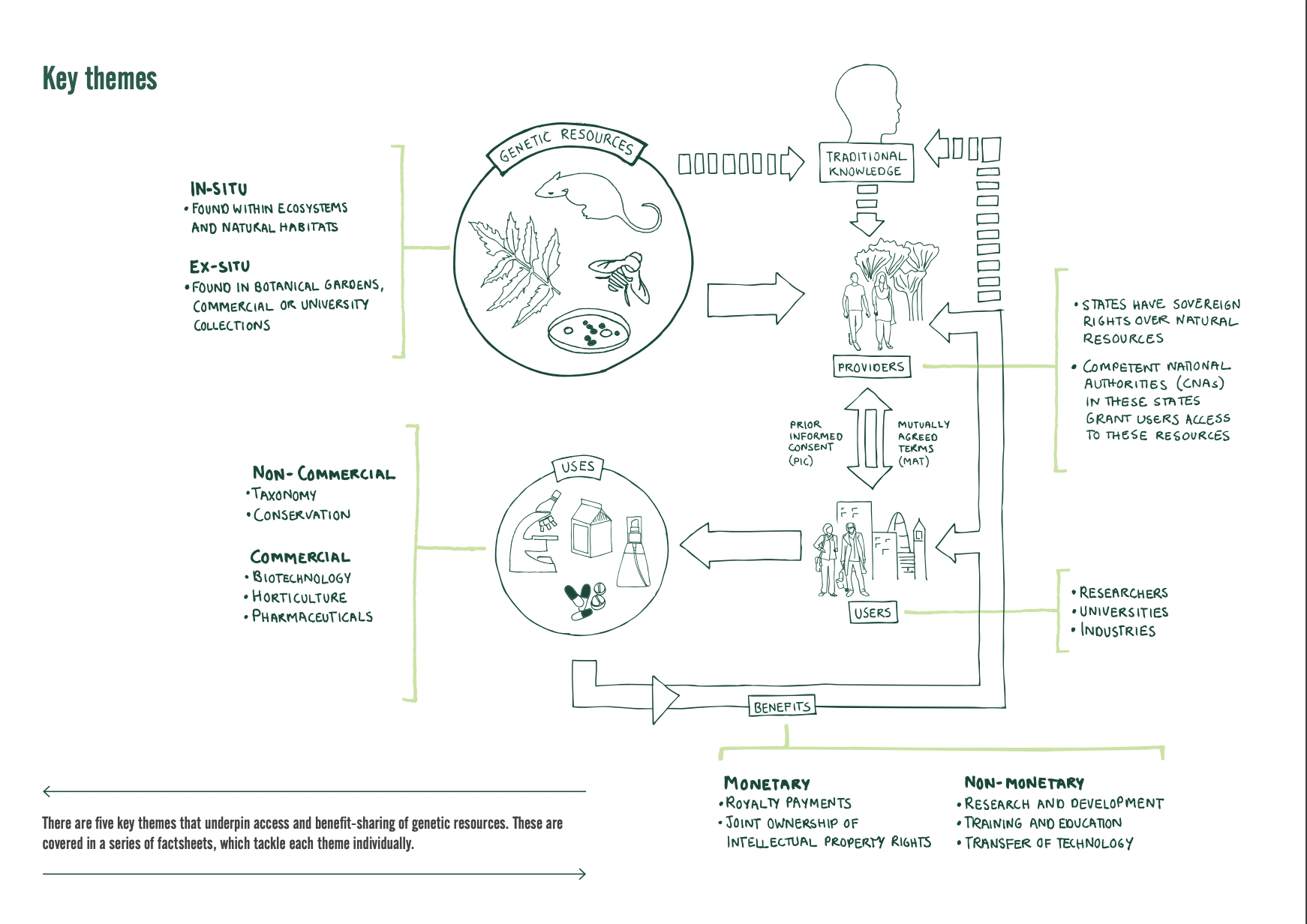
Convention on Biological Diversity: ABS
For example, the neem tree, sometimes referred to as the "tree of life" in India, has vast medicinal and healing properties. It may also be utilized to create natural fungicides and pesticides. In 1995, US multinational W.R. Grace was granted a European patent for the use of neem oil in their organic fungicide Neemix. According to a 2008 report, the brand is valued at over USD 60 million annually. Indigenous communities in India had been using neem oil as a fungicide for centuries, but others benefited from their knowledge.
The Philippines, like India, faces similar opportunities and challenges. Our country is a mega-diverse hotspot with a high potential for wealth creation that can result in significant social and economic benefits for the communities. According to a study commissioned by UNDP Philippines, our country loses an estimated USD 8.1 million per year in royalty earnings for a single pharmaceutical product derived from Philippine genetic resources that was patented by a foreign company.
While our country boasts a plethora of endemic species, some have been threatened by illegal genetic resource extraction resulting in unsustainable harvesting and ecosystem degradation. Prior to the 1992 Convention on Biological Diversity (CBD), genetic resources in the Philippines had been patented without sufficient acknowledgment and recompense to the sources. This is due to a lack of awareness and a clear legislative framework to implement the fair and equitable sharing of benefits to indigenous peoples and local communities as stewards of these biodiverse ecosystems and traditional knowledge.
While misappropriation remains an issue, the CBD seeks to provide a solution through access and benefit-sharing (ABS). This refers to the way genetic resources may be accessed and how the benefits that result from their use, particularly their biochemical composition, are shared between the users and the providers.
Our country loses an estimated USD 8.1 million per year in royalty earnings for a single pharmaceutical product derived from Philippine genetic resources that was patented by a foreign company.
Lagundi as the first commercially successful Philippine herbal medicine
In the Philippines, lagundi (Vitex negundo) is the first commercially successful herbal medicine that arose from focused research conducted by our Filipino scientists on the existing knowledge of traditional healers on known Filipino maladies. Its discovery was the result of extensive study since 1974, pioneered by the National Integrated Research Program on Medicinal Plants (NIRPROMP) of the National Institutes of Health (NIH) at the University of the Philippines Manila.
Back in the 1970s, the Philippine pharmaceutical industry was not self-sustaining. Companies spent USD 22 million on imported medicines that the public could not afford. This inspired a group of researchers from NIRROMP to conduct a survey among 1,700 albularyos (folk healers or medicine men) to document the plants they use and the elements they contain. A remarkable 75% of albularyos attest to lagundi's efficacy in cough treatment. Further studies determined it to be the most potent with few side effects, and while it is abundant all over the country, NIRROMP eventually developed lagundi in tablet and syrup form for the market.

Despite having its license, lagundi faced competition against multinational pharmaceutical companies as well as public skepticism about using a local herbal medicine. It was only in 1995 that lagundi entered the market and two years later, through the initiatives of Pascual Laboratories, lagundi received a silver award from the Inter Exhibition of New Products, Inventions, and Techniques in Geneva, Switzerland. This was a significant breakthrough since it was the largest invention expo in the world.
From 2012 to 2018, a royalty fee of approximately PHP 40 million was paid to UP Manila and the scientists involved in the research. According to Dr. Cecilia Maramba-Lazarte, Director of the Institute of Herbal Medicine, there are 13 active non-exclusive licenses from pharmaceutical companies as of 2021. With this breakthrough, hectares of idle land were used by cultivating lagundi, resulting in an estimated annual profit of PHP 200,000 - 553,000 per hectare.
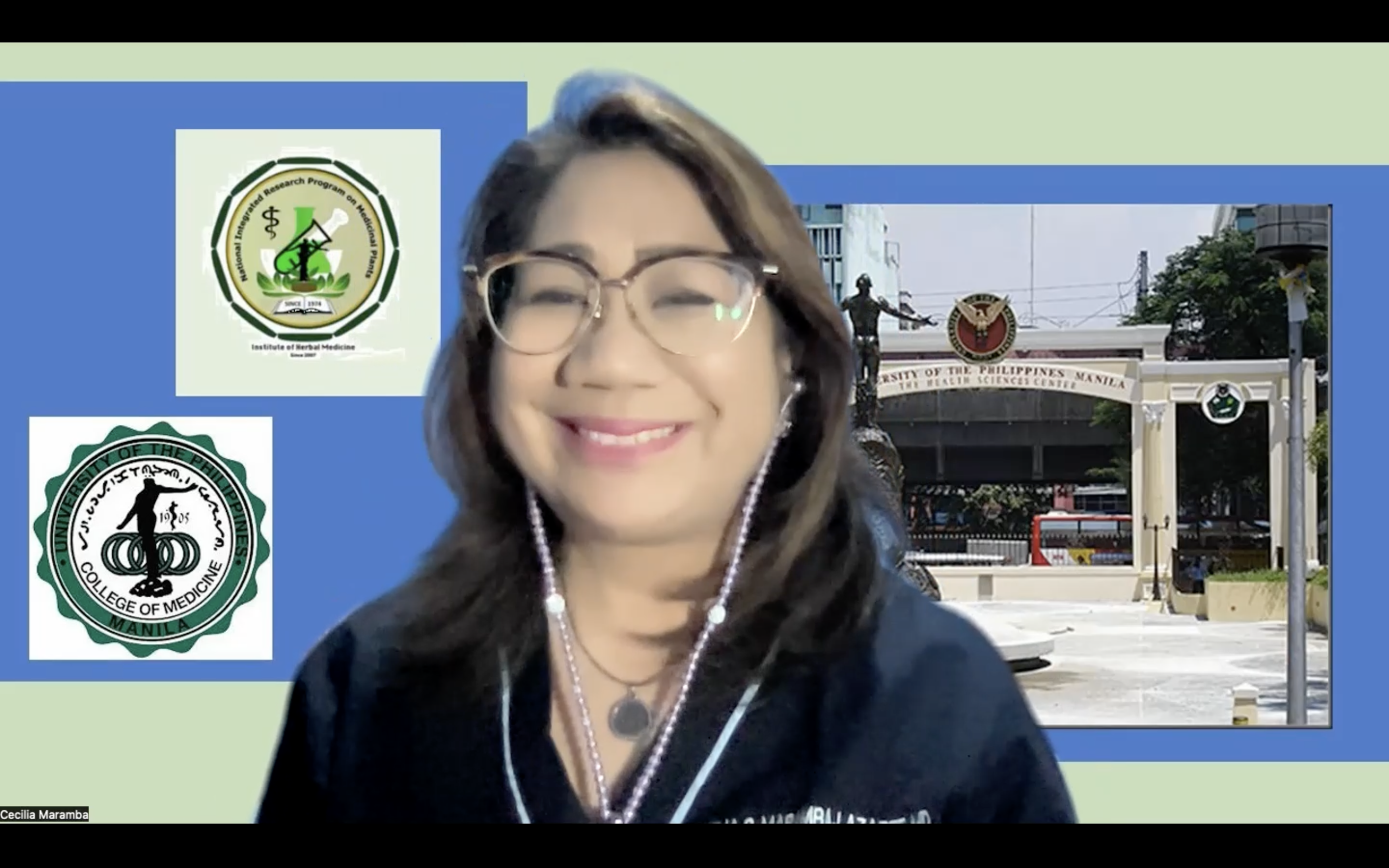
Online interview with Dr. Cecilia Maramba-Lazarte, Director of the Institute of Herbal Medicine
The COVID-19 pandemic provided an opportunity to fuse traditional knowledge and science through further study and development. Mild COVID-19 patients may take specific dosages of the lagundi tablet or syrup three times a day for ten days to improve their symptoms, according to research conducted by UP Manila with support from the Department of Science and Technology - Philippine Council for Health Research and Development (DOST-PCHRD). To this day, the saga continues to define lagundi’s role in the treatment of COVID-19.
Lagundi as a cough medicine is just one of many patents that require a well-designed ABS mechanism. In an interview with Dr. Cecilia Maramba-Lazarte, she mentioned that it would be advantageous for the Philippine research industry to have a specific percentage of royalties that directly go back to research institutions to alleviate our country’s bio-industry.
While ABS is concerned, there remains a great opportunity to establish mutually agreed terms (MAT) that could ensure optimal gains and a fair share of benefits among researchers, the private sector, local communities, and albularyos from whom the local knowledge was acquired.
The ABS Project aims to reawaken Filipinos’ appreciation of their genetic resources
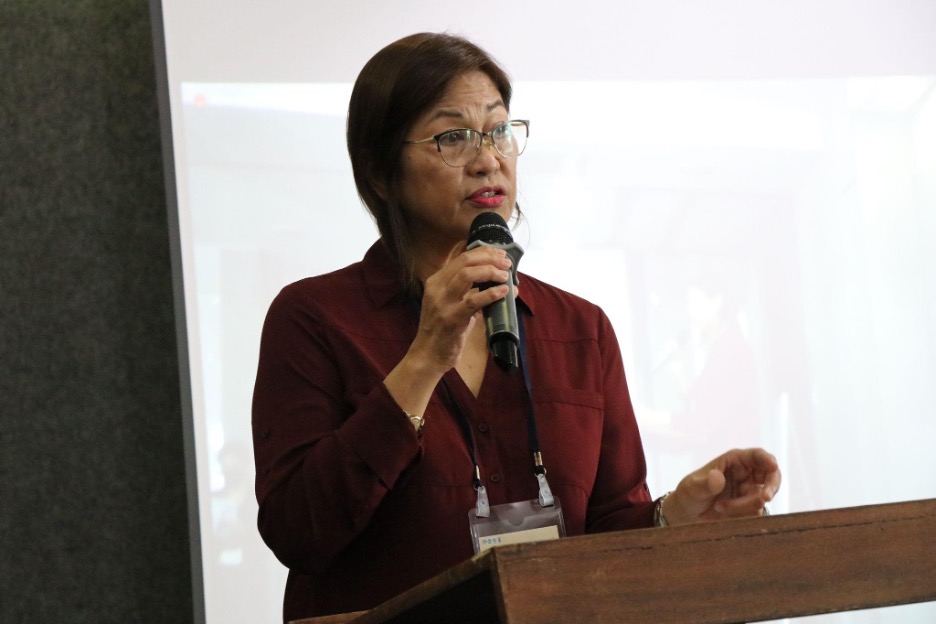
DENR-BMB OIC Director Natividad Bernardino rallied the support of government agencies and key stakeholders to come up with a harmonized and unified ABS system.
As one of the 17 mega-biodiverse countries of the world, the Philippines acceded to the Nagoya Protocol in December 2015. It is an international agreement after the CBD that strengthens Art. 15 of the convention and recognizes the sovereign rights of countries to regulate access to their genetic resources. It also provides a compliance mechanism to ensure that a fair and equitable sharing of benefits arising from the use of genetic resources and associated traditional knowledge is monitored and tracked at all stages, from research and development up to commercialization.
Through Executive Order (E.O.) 247, the Philippines was among the first in the world to enact a national ABS policy measure in 1995. Over the last 27 years, several pieces of legislation have been passed to establish the mandate of government agencies in determining access to genetic resources in the country. The Wildlife Act or Republic Act 9147 passed into law in 2001, and the Indigenous Peoples Rights Act (IPRA) of 1997.
The ABS Project seeks to increase economic opportunity and biodiversity conservation for indigenous peoples and local communities in the Philippines through fair and equitable sharing of biodiversity benefits.
To date, there are knowledge gaps that need to be addressed, and opportunities that can be taken advantage of, necessitating a much-needed revisiting of the ABS concept. It is critical to recognize how academic researchers use Philippine genetic resources and the way they are turned into useful products that generate benefits that may be shared with the communities that have nurtured these resources and provided information on their useful properties.
On July 12, 2021 the Global Environment Facility (GEF) approved the Implementing the National Framework on Access and Benefit Sharing on Genetic Resources and Associated Traditional Knowledge in the Philippines or the Access and Benefit Sharing Project. The DENR Biodiversity Management Bureau (BMB) is implementing the 6-year project with support from the United Nations Development Programme (UNDP) until 2027. This initiative is spearheaded by the Wildlife Resources Division of DENR-BMB, which is headed by OIC Division Chief, Atty. Theresa M. Tenazas.
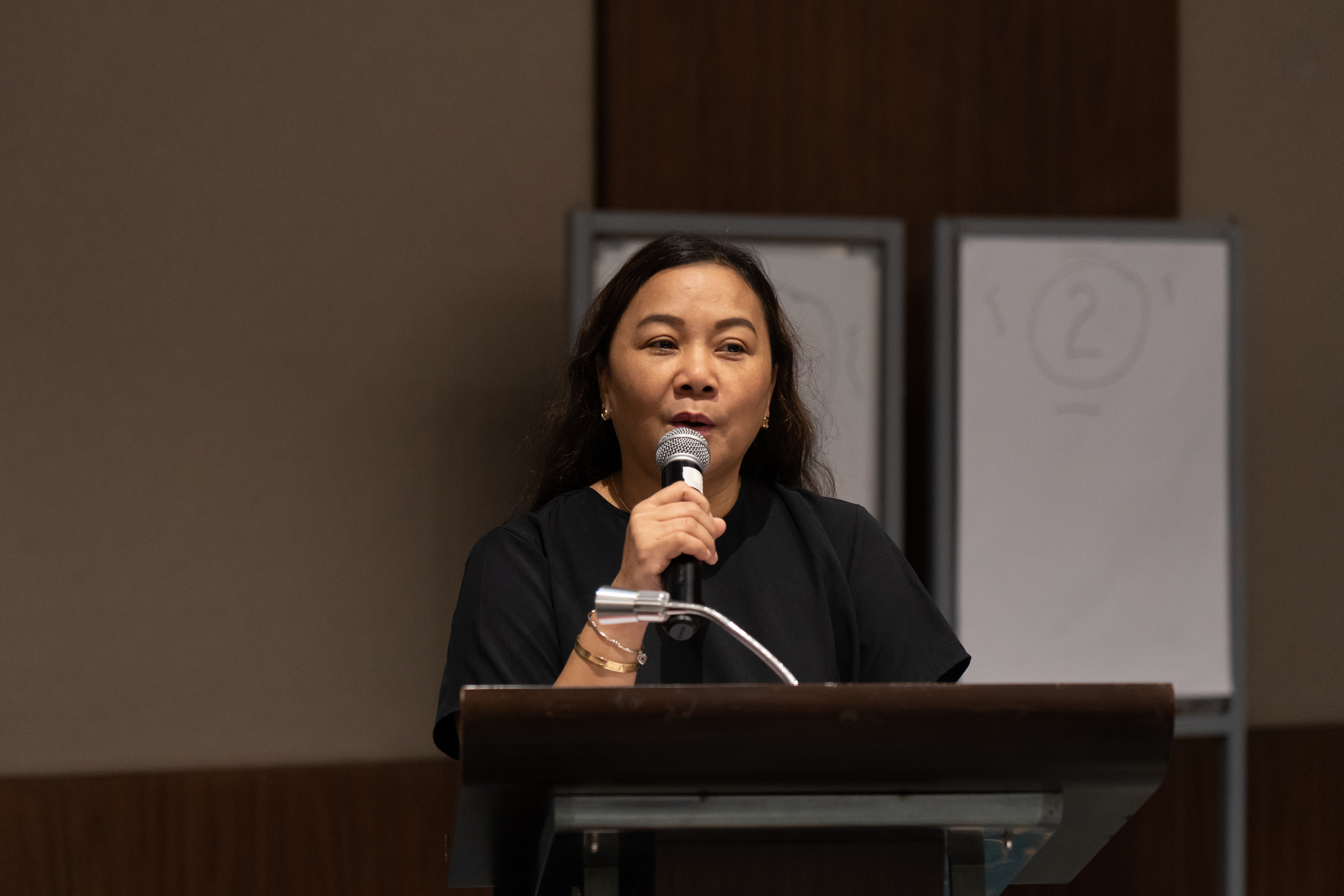
Atty. Theresa M. Tenazas, OIC Division Chief of the DENR-BMB Wildlife Resources Division emphasized the need to "reengineer" policies in order to reduce bureaucratic red tape and processing time
The ABS Project seeks to increase economic opportunity and biodiversity conservation for indigenous peoples and local communities in the Philippines through fair and equitable sharing of biodiversity benefits. The project aims to support the development of at least two bioproducts from local genetic resources of banaba in Region III and pili in Region V.
Primary, the ABS Project aims to establish the national coordinating mechanism, procedures, tools, and platforms that will allow the Philippines to comply with the Nagoya Protocol through three outcomes:
- Outcome 1/ Component 1: Strengthening the national framework for implementing ABS in accordance with the Nagoya Protocol.
- Outcome 2/ Component 2: Enhanced understanding of the ABS regime and the value of traditional knowledge associated with genetic and biological resources for improved policy making and on the ground conservation, sustainable use and fair and equitable sharing of benefits.
- Outcome 3/ Component 3: At least one ABS Agreement negotiated and finalized that demonstrates PIC and MAT and with clear provision on fair and equitable benefit sharing.

UNDP Philippines Deputy Resident Representative Edwine Carrie mentioned the partnership between indigenous peoples and local communities and the private sector could be realized will provide a learning model to be scaled up and replicated
The ABS Project seeks to empower and strengthen indigenous peoples and local communities (IPLCs) as partners and sources of genetic resources and traditional knowledge. The project intends to involve IPLCs in all phases of project implementation, honor Free Prior Informed Consent/Prior Informed Consent, and assist in the drafting of mutually agreed terms (MAT) that could ensure optimal gains and a fair share of benefits.
The ABS Project is a multi-sectoral undertaking that requires the involvement of all key stakeholders. These include the four national authorities, namely, the Department of Environment and Natural Resources (DENR), Department of Agriculture (DA), National Commission on Indigenous Peoples (NCIP), and Palawan Council for Sustainable Development (PCSD), the local government units (LGUs), as well as the academe and research institutions, private sector, and most especially the indigenous peoples and local communities.
IPLCs in key biodiversity areas that lack sustainable livelihoods could derive monetary and/or non-monetary benefits from fair and equitable use of their genetic resources. Anchored on the Philippines’ Wealth Creation Programme from Biodiversity Resources, the ABS Project ushers new economic opportunities while safeguarding the country’s biological resources and facilitating fair and equitable sharing of biodiversity benefits.
Bioprospecting for scientific and technological advancements contributes significantly to human welfare. As natural cures are the foundation of all medications, bioprospecting will remain crucial in the future, but it has to be done in a way that is fair to the biodiversity-rich communities that have kept these resources alive and are continuing to benefit from them in their own local context. This is what access and benefit sharing aims to achieve.

 Locations
Locations

